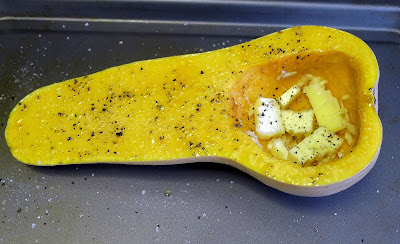The bf bought half a lamb a while ago through which we have slowly been working (I’ve wondered what happened to the kidney that surely is part of half a lamb but I guess I’ll, sadly, never know), including the shoulder which I’ve posted recently and also lots of lovely chops and steaks.. oh BBQ season how I will miss you.
I think apart from the leg which obviously we ate the other day there is only the breast left. Naturally I have something up my sleeve for that but in the meantime here we have a lovely leg, roasted with aubergines and red onions and accompanied with tasty potatoes boulangère. The latter is, in my opinion, just as impressive and yummy as a dauphinoise but a million times lighter and healthier.
We had the lamb leftovers a day or so later reheated carefully (on the bone, in the oven, wrapped in foil but laid on some diluted gravy to keep the moisture levels up) with some roast potatoes and mint sauce. Frankly, equally as delicious.
The quantities here for the lamb are fairly vague as I was a little in “make it up as you go along” mode and only scribbled down approximations later - just use your judgement.
Roast Leg of Lamb with Aubergines & Red Onion
2kg (ish) leg of lamb
2 cloves garlic, thinly sliced
anchovy paste
2 tsp honey
1 tbsp olive oil
1 tbsp ras el hanout
1 tsp cumin
10 baby aubergines
1 red onion, cut into 8 wedges with root still intact
1 tin of cherry tomatoes
small handful of coriander stalks, finely chopped
2 tsp of harissa paste
1 red chilli, finely chopped
1 tsp tomato puree
good glug of red wine vinegar
½ tsp sugar
sea salt & freshly ground black pepper
Preheat the oven to 200C.
Make deep slits in the lamb (carefully!) using a very sharp knife, poke some anchovy paste and a slice of garlic into each slit.
Remove the lamb from the oven and scatter the aubergines and red onion around the lamb in the tin, tossing them around to coat with the oil & lamb juices. Place back in the oven and continue to cook for a further 30 minutes, occasionally turning the vegetables.
Remove from the oven and set the lamb aside to rest for 10 - 15 minutes loosely tented with foil.
Put the roasting tin on the hob and gently simmer the tomato sauce until it has reduced down slightly so you have quite a thick and chunky sauce.
serves 3
750g potatoes, scrubbed and thinly sliced
1 medium onion, thinly sliced
5g fresh rosemary, leaves stripped and bruised in a pestle & mortar
a few thyme sprigs
150ml vegetable or chicken stock
75ml milk
20g butter
Lightly butter a gratin or pie dish and preheat oven to 200C.
Take ⅔ of the rosemary leaves and chop them finely then fry the onions, thyme sprigs and rosemary in a little oil in a pan over a medium low heat until softened and lightly coloured (about 5 mins).
Arrange a layer of potatoes in the buttered dish then sprinkle over some onions and season. Continue layering like this, finishing with a layer of potatoes that slightly overlap.
Mix the stock & milk together and pour over the potatoes.
Season the top layer, then scatter over the remaining whole rosemary leaves and a sprig of thyme. Dot little flecks of butter all over the potatoes and place the dish on the highest shelf of the oven for 50-60 minutes, until the top is crisp and golden and potatoes are tender.
Serve with alongside slices of lamb atop the vegetable sauce.







































.jpg)







.jpg)


